In charts: education around the world

Roula Khalaf, Editor of the FT, selects her favourite stories in this weekly newsletter.
Progress in offering quality education to children around the world by 2030 is falling well behind target. The proportion of students who complete lower secondary school (typically those aged 12-15 years) has been rising in recent decades, but remains a minority in poorer countries.
Efforts to increase the proportion of children attending school have been increasing, but have often not been matched by improved learning. Many children are failing to gain basic literacy and numeracy skills — making it impossible for them to progress to secondary school, and pushing many to drop out of education.
“Learning poverty” has increased during the Covid-19 pandemic, which set back children around the world — particularly those from poorer backgrounds and without access to parental support or the internet.
Funding for education remains limited overall. Governments account for the greatest share, and those in low-income countries invest a far more modest proportion of GDP than their richer counterparts.
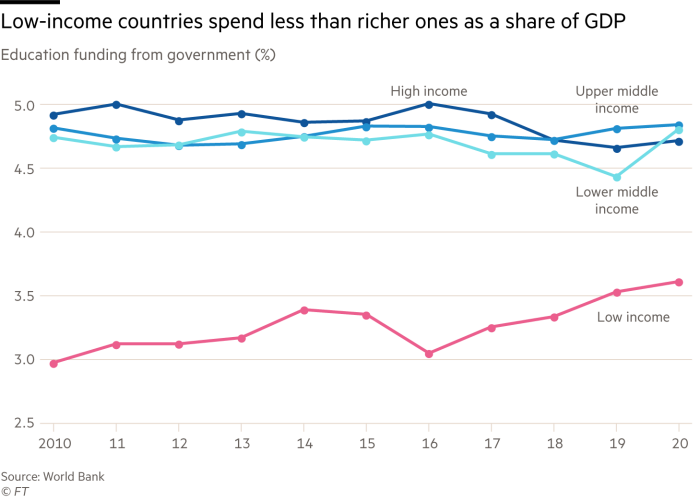
A large share of the costs of schooling is paid by families themselves, especially in lower-income countries, which further increases inequality.
Donor funding for education is modest and lags far behind international development assistance given for health and other sectors.
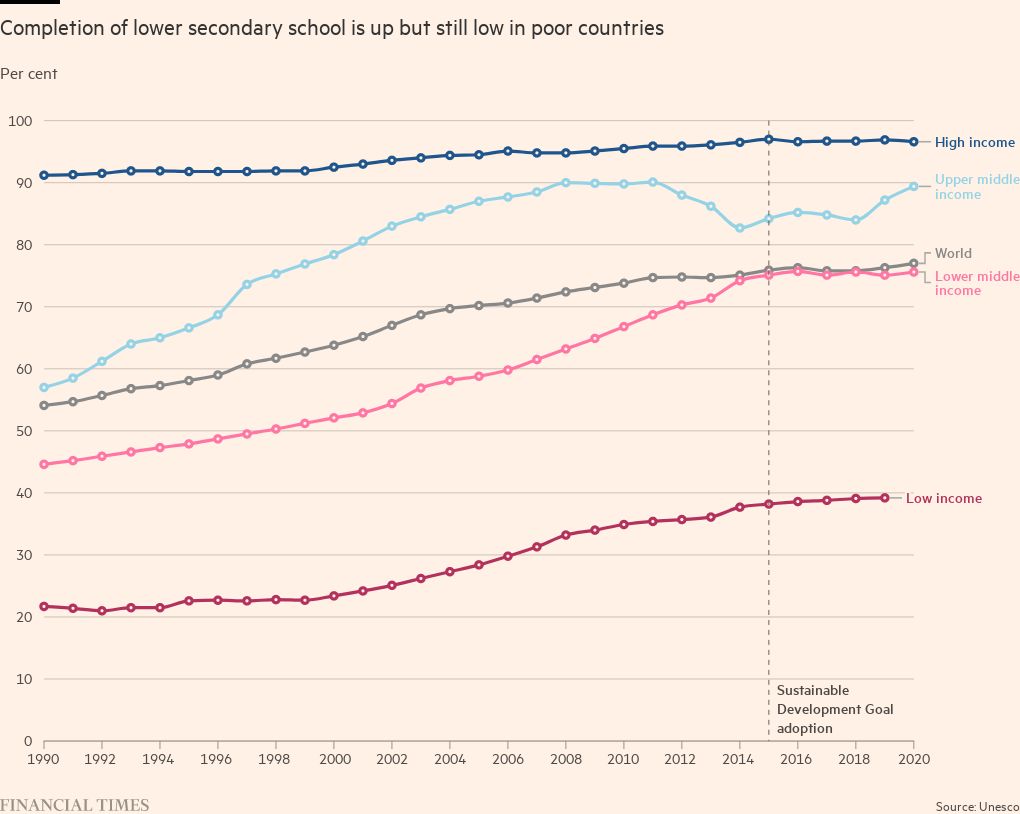
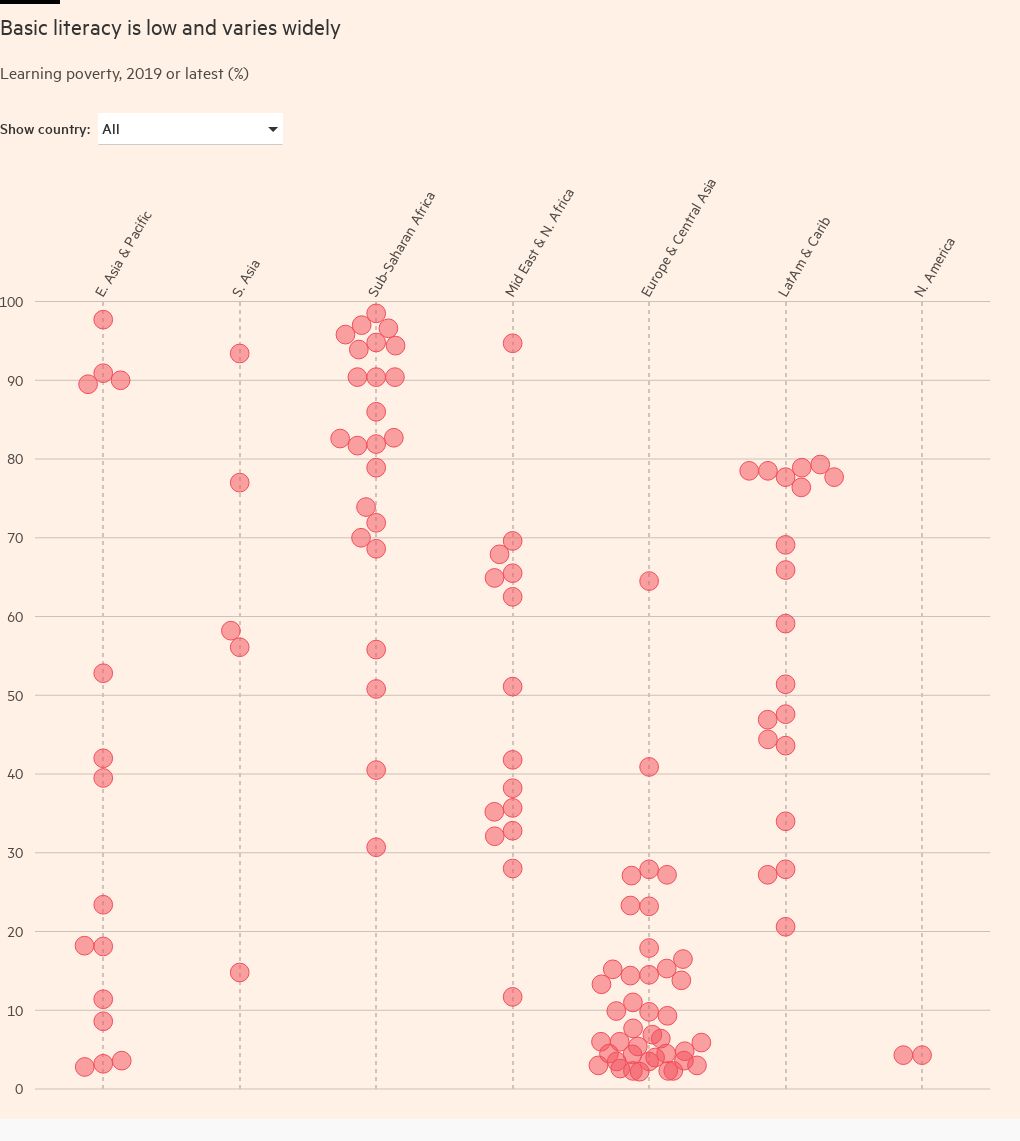
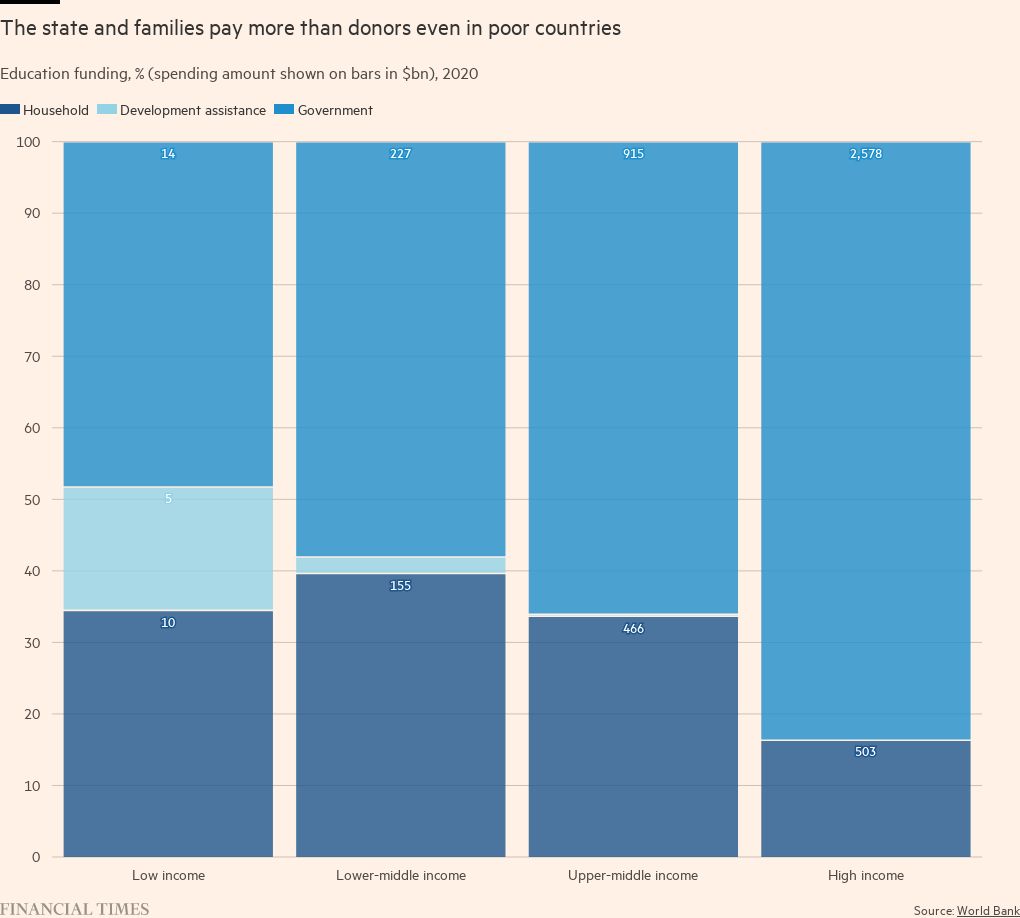
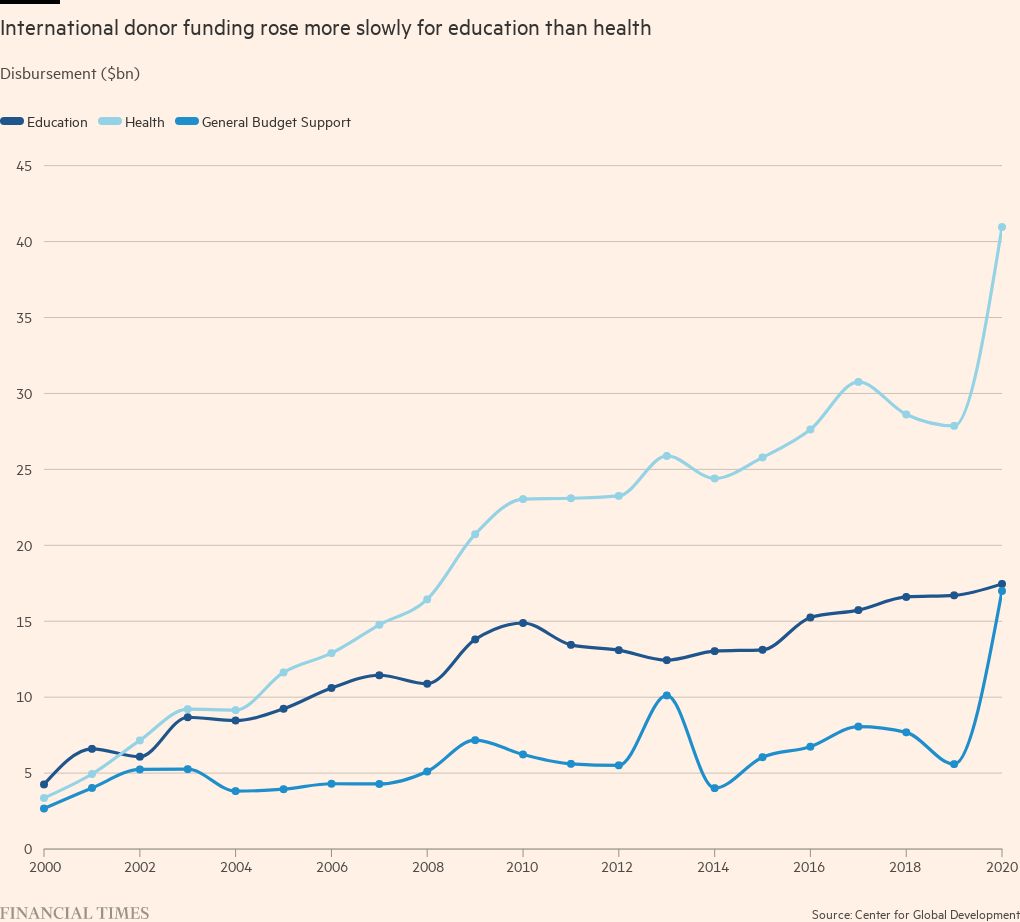
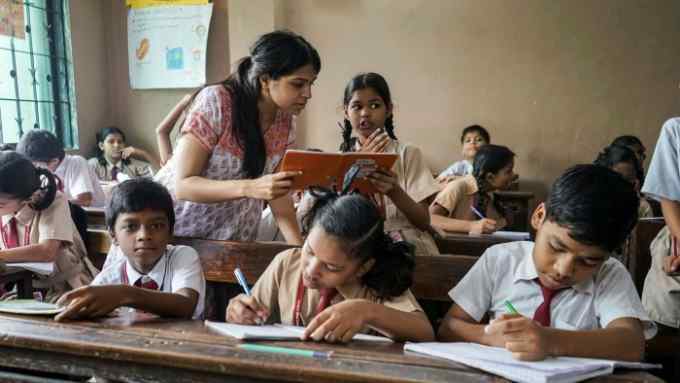
Comments